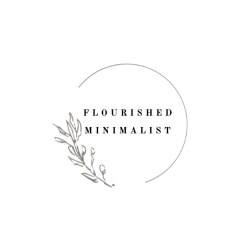
I have often found that good design is that which indulges all the 5 senses to create an experience for the people that engage with it. We find that the more senses we engage, the more strongly we are tied to a moment, an object, or a space. And the more we are likely to enjoy it. Whether that be in interior design, fashion, or art. We can hear( sense of sound) or smell design and quickly form a perception of it in our mind way before we even see it. Making sensory design one of the most powerful tools for a designer.
We must not forget that the goal of an interior is to move forward the intention of the space; engaging the user in meaningful ways.
As well as creating meaningful experiences; It is the simple dance between mind( evoking knowledge and perception), body(appealing to the senses) and the environment(including as well as being intentional of the environment around it) to create an eventful and memorable state.
Sensory design honors the pulse of living, breathing spaces.
Further engaging the senses to create meaningful design
The Importance of The Sense Of Sound and Acoustic in an Interior.
Simply put, sound are vibrations that travel through the air or any other medium and can be heard by a person or an animal.
Although the role of sound in design is often ignored, It has a substantial impact on our feelings, emotions, and attitude. The sound of a space can cause you to reflect/meditate, dance, rest, imagine… It can lift your spirit or cause you to be sad; make you smile at a fond memory or repulse you. Whether we are aware of it or not.
This is sometimes referred to as sensory sound or sensitivity to sound.
It is the perception of sound as a carrier of emotions and a connector of memory.
More like a bridge between our outer physical and inner emotional worlds.
The sense of sound can transform the way we listen, the way we think and feel.
And more importantly, sound in design is less about sound and hearing but more about sound and feeling.
THE ROLE OF SILENCE IN DESIGN.
More so the sound of silence, which creates a feeling of calm, meditation, nature, and healing.
It is reminiscent of a gentle touch, a state of peace, and a sense of purity.
When we think about designing sound as designing touch, we make different choices; You can touch an object from a distance through sound.
And, a gentle touch is more effective than a forceful one.
Sound has a strong influence on how you experience a space.
As a result, the acoustics of an interior should be carefully considered so as to make people feel comfortable as well as enjoy a space.

INTRODUCING SOUND IN YOUR INTERIOR TO CREATE A CALM NATURAL HEALING SPACE
Effective sound management in an interior is absolutely paramount; Good acoustic design is achieved by determining the purpose of the space and what it is going to be used for.
Having this in mind, Do a quick audit of the sounds in your space and determine how you would like the space to serve you.
And the feelings you would like to experience while there.
Once that is defined then you can move on to creating the right acoustic design for the space in these simple steps.
SOUND DESIGN IN 8 SIMPLE STEPS
- While designing your overall layout, separate quiet spaces from noisy active ones.
- Create intimate conversation areas; such as coffee zones, reading nooks and cozy lounge sections; This encourages a more social environment and aids with clear dialogue exchange.
- To reduce the ambient level of noise, Use material or textured acoustic panels to help diffuse the noise. Also using beautiful wall papers and cork finishes will also do the job without compromising the beauty of the space. Brands like BAUX do this well.
- For a calming feel, look to incorporate nature sounds in your space. You can use water fountains or sound devices to achieve this. Nature has the ability to soothe our souls and is a perfect catalyst for healing.
- High ceilings often make background noise difficult to control, so if your space happens to generally have a high ceiling consider a textured ceiling treatment like acoustic boards or even fabric for the daring ones.
- Use plush rugs,carpets, cushions, and textured artworks to help absorb noise in an area. Especially if you want the space to feel cozy and intimate.
- Cleverly introducing curved surfaces in a space can also cleverly diffuse sound. This can be in your ceiling and lighting design or in your furniture choice.
- Consider other floor alternatives like Cork. It is incredibly durable,beautiful, quiet, and comfortable.
SOUND AND HEALING
Furthermore, studies have shown that sound can manage and treat stress-related illnesses; Like anxiety, depression, and chronic pain.
It is proven to induce calm and relaxation. Thus making it an effective way of improving quality of life.
Enjoy the sounds by Aromeo.
Implementing one or two of the steps will make a substantial difference in the sound quality of your space. Leave a comment and let me know your experience.
Cheers!
